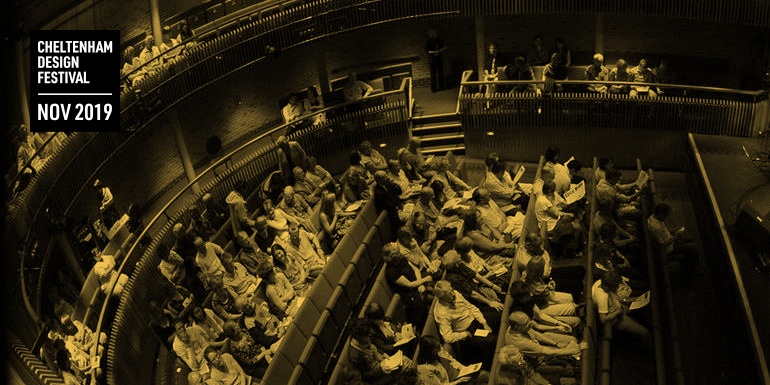I attended the Friday and Saturday of the Cheltenham Design Festival, located at the Parabola Arts Centre in Cheltenham, United Kingdom. I didn’t know what to expect from the event leading in, with some big names speaking there in the past, but with a 3-year hiatus, and not much media coverage about the event, it was hard to set a level of expectation. However, I was presented with an array of cross-discipline design talks from some established and up and coming names. Here is my account of some the best talks over the two days.
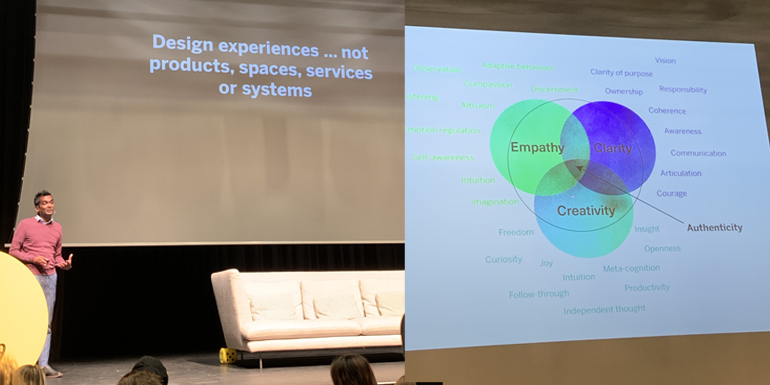
Friday morning - Rama Gheerawo
We kicked off with a fantastic talk from the godly Rama Gheerawo, a Director at The Helen Hamlyn Centre for Design. The talked about the importance of inclusion in design. The value of using real people in your research, and the detrimental effect of relying on personas to validate your design decisions. His point was that personas will never dispute your designs, as you yourself created them. He talked about a very human-centric case study called the Future Foyle project based in County Derry, Ireland. This project highlighted the importance of physically engaging with your work and understanding the real-world interactions people will have with your design solutions.
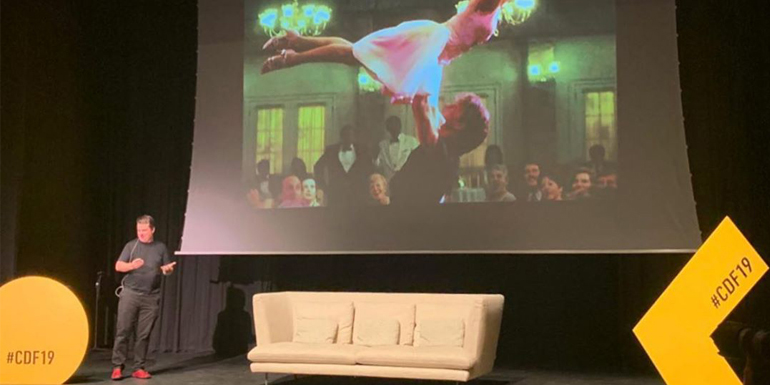
Mid-morning - Andy Puncher
Later that day we were given a delightful talk by Andy Puncher, the founder of architecture practise PH+ Architects. Andy showed a series of beautifully designed architectural layouts and renders, which advocated high-level consideration for the human interaction missing inside many urban residential spaces. His work promoted a dual-aspect design, allowing residents to choose which way their environment faced. There was deep consideration for the overlap of exterior spaces and how they could be arranged to achieve a beneficial social rhythm and sense of community. He also presented an avant-garde concept which suggested the social benefit of co-living spaces, in which people would share their usually private living areas. By truly considering the end-user and solving real problems it was incredible to see the impact his work was having. It was an inspiring presentation in both a professional and cultural sense.
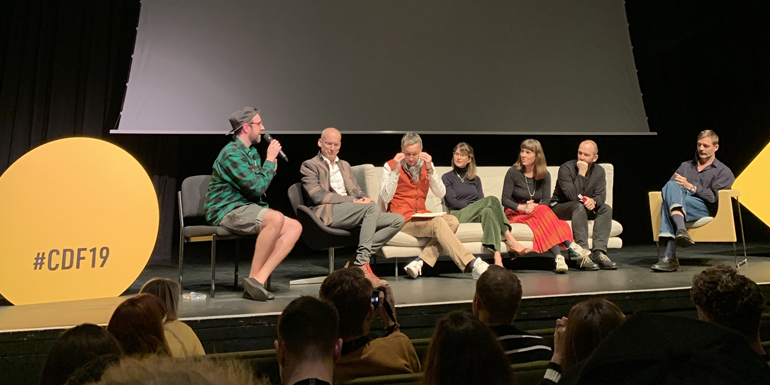
Friday Midday - Panel discussion
A cross-disciplinary panel of designers sat down with Luke Tonge of Birmingham Design Festival to discuss the current role of the designer. It was an interesting dialogue that touched on varying industries, with one unifying theme – The responsibility of the designer to champion ethically led work, demonstrating to others the importance of design thinking and its ability to solve complex problems.


After lunch - Paul Boag
Paul took the stage and got everyone laughing with his southern humour and straight-talking remarks. He chose an amusing case study, Lovehoney.co.uk to explain how User Experience “doesn’t end at the edge of your screens” and in fact is the full interaction journey that person has with a brand or service. He went on to give a great process insight into how he uses a sprint framework to produce a journey map at the start of a project. This was a great talk from Paul and one that I felt was appreciated by many.
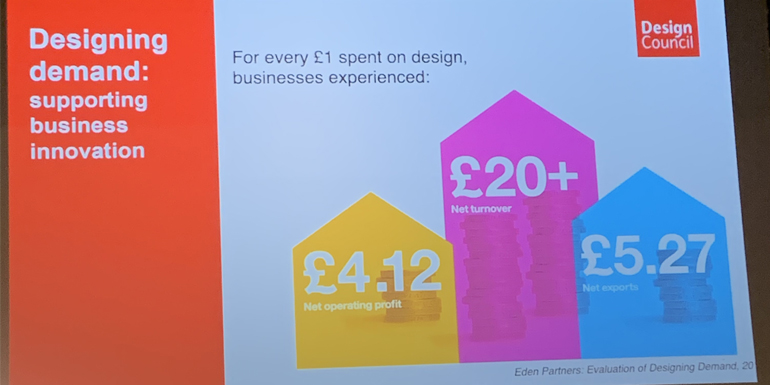
Friday Afternoon - Dr Ambreen Shah
I was fortunate enough to chat with the next speaker earlier in the day, who had a very warm and open demeanour. She was Dr Ambreen Shah of the Design Council and was there to discuss the importance of design-led thinking across our economy. During her talk, she offered some incredible insights into the ROI available to businesses who value design thinking. She also presented some data to highlight the skills that will be most in-demand in our future economy.
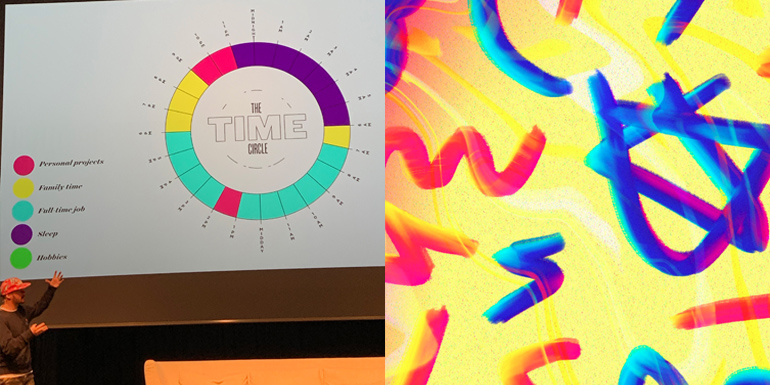
Saturday morning - Gavin Strange
On Saturday, the following morning, we were all blown out of our seats, grinning from ear-to-ear as Gavin Strange of Aardman Animations gave a fantastic talk about maximising your creative practice. A clearly multi-disciplinary talented designer, Gavin showed a range of industry and passion led projects that had driven his career and creative development. They ranged from typography and logo pieces, through to animation and video editing, all layered with a synthy-soundtrack, some of which came ad-hoc, using his sample machine live on stage. His 2-year-old son, Sully featured as a welcome cameo, hitting some of the sample keys himself and featuring in sections of his video work. Gavin also shared his time-wheel with us, giving a finite reminder that we all get 24 hours in a day. Something I have been giving some serious thought to ever since!
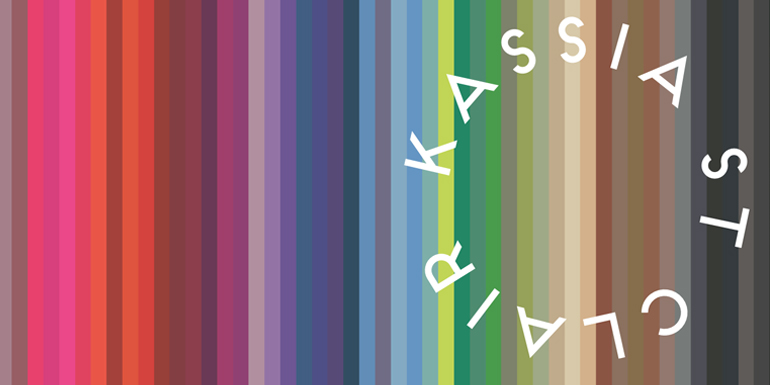
Mid-morning - Kassia St Clair
Kassia St Clair gave a wonderful account of 5 colours from her beautifully imaginative and historical book The Secret Lives of Colour. She included some captivating stories such as Ultramarine which was a mineral mined from a remote location in Afghanistan back in the renaissance period and shipped all the way back to Europe for artists to use. The use of Scheele green, which actually contained high levels of Arsenic and led to a lot of deaths before its health implication was realised, and Mummy-brown which unbeknown to a lot of users was actually made from digging up mummified remains in Egypt and grinding them down into a murky pigment. I actually have this book myself and found great joy in listening to the highly informed journalist recount some of the fantastic narratives that lie behind the colours we use every day as designers.
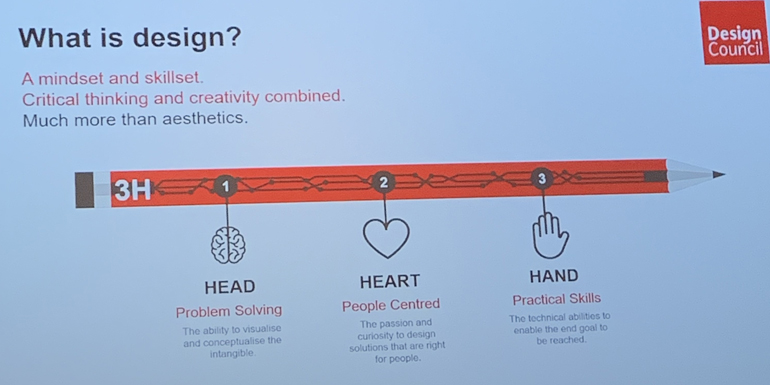
Saturday midday - Panel discussion
The panel discussion today was focused on the impact of a designer, openly discussing people’s understanding of what design actually consists of, joking that even their mums didn’t really know what they did for a living. Steve Matteson gave the insight that Disney’s designers are called Imagineers based on their responsibility to envision new realities. Craig Oldham joked that this was laughable, and it’s the responsibility of designers to educate non-designers on what our profession consists of, rather than attempt to apply new labels to close this gap. The insightful point to come out of this was that the term ‘designer’ is actually quite ambiguous, for such a varied and flexible job role.
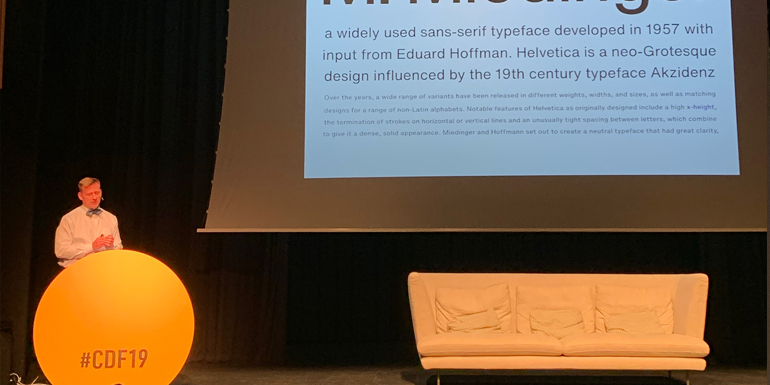
Early afternoon - Steve Matteson
Just before lunch an industry heavy-weight and prolific type designer, Steve Matteson of Monotype came onto the stage and gave an insightful talk into modern typography. He discussed the importance of choosing readable typefaces, like Frutiger over display fonts like Helvetica when setting body text. He showed us how a recut version of Helvetica, called Helvetica Now, had been cut to enable its use at smaller sizes. He noted how variable fonts will allow the user to zoom into content, adapting their weight in proportion to the users viewing distance, resulting in higher readability at all distances. As the type designer behind Open Sans, he explained how its readability is linked to its open counter and advised that low readability often comes from a lack of negative space, rather than the character form itself.
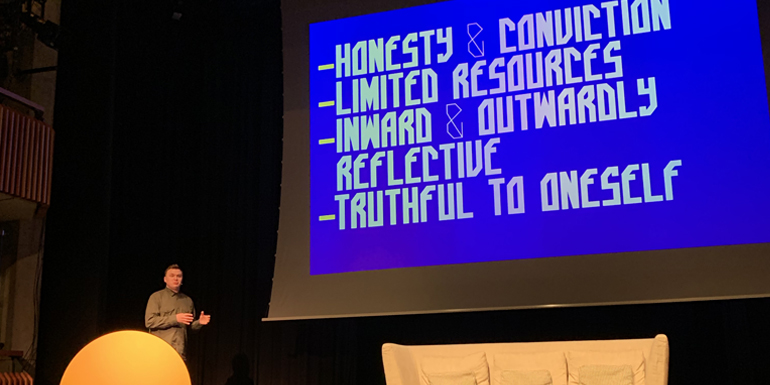
Saturday afternoon - Craig Oldham
There were some other great talks of course, from the likes of Craig Oldham who discussed activism in design, echoing Ken Garlands First Things First Manifesto. Tommy Howard of Holition who presented some incredible case studies into Augmented Reality, and Jim Suthaland and Marcus Lyon who shared an incredible series of projects that documented migrants and indigenous people who had performed great social acts in their countries of residence.
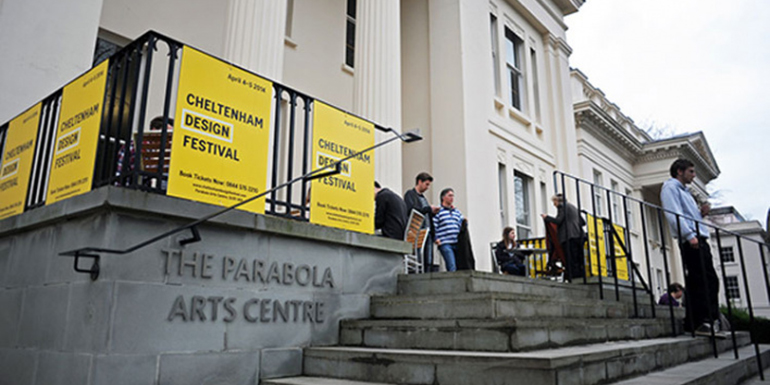
The 2 days spent in the Parabola Arts Centre could have been 2 months with all the information we had absorbed! There were some great insights accompanied by a warm atmosphere throughout the event. A big thank you to the organisers and team involved, it was a fond experience, which is a sentiment I’m sure will be shared by many.


